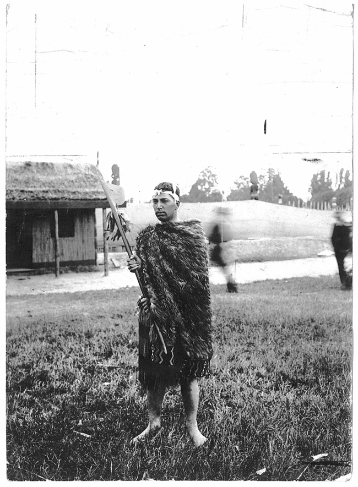Exciting Changes At Bishop Museum
My fondest memories as a youngster growing up on Oahu include activities that I experienced along Kalihi Street. My educational journey began by entering kindergarten at Kalihi-Kai Elementary (fortunately, I am still able to visit with my kindergarten teacher Barbara Leong), and up the street, my early interest in reading started with regular visits with my mom to Kalihi-Palama Library.
I got my start playing basketball and baseball through the Police Activities League at Kalakaua District Park and Kamehameha Field. My dad took the family to church at the LDS chapel across Farrington High School, where all my older siblings graduated. And I can’t begin to enumerate the ono meals I have had at Kenny’s Burger House and later Restaurant. Finally, my introduction and curiosity into the origins of my ancestral Polynesian roots and how they fit into the dynamics of the Pacific region were spurred by childhood excursions to Bishop Museum.
More than five decades later, I still find myself frequenting and spending time in this special area of Kalihi that made quite an impact on me in my youth. For example, Bishop Museum has just wrapped up a multimillion-dollar face-lift that celebrates all things Pacific. A grand unveiling of Pacific Hall, formerly known as Polynesian Hall, has undergone some major nips and tucks that are aimed at breathing new life into the recently renovated attraction, which has taken three years to overhaul and beautify.
“The $8.5-million renovation and restoration project is aimed at presenting a new perspective on the story of Pacific migration, along with ground-breaking data that revises the timeline of Pacific settlement, a result of the advancements made in the scientific techniques of archaeology, linguistics and DNA testing,” says Blair D. Collis, president and CEO of Bishop Museum. “The renovation is symbolic of the new direction the museum has undertaken to actively engage people in the exploration and preservation of Hawaii’s cultural heritage, natural history and ancestral cultures throughout the Pacific.” Collis believes visitors will be able to place Hawaii, Hawaiian culture and Hawaiian history in the context of the “greater Pacific.”
Pacific Hall will display key artifacts and objects uncovered during the archeological expeditions mounted by Bishop Museum researchers over the last century in Samoa, Tonga, Fiji, Tahiti, Marquesas, Cook Islands, and even other areas beyond Polynesia, including China and Taiwan.
The first floor explores a range of subjects from navigation to religion. A canoe overlooking the hall was refurbished by its original owner John Koon, master mariner, marine surveyor and rigger. The craft came from Fulunga Island in southern Fiji. The entire floor shows us how and when the migrations of people took place in the Pacific. Visitors learn how science has been used to verify the history of the Pacific cultures through archaeology and modern-day testing.
When you go to the second floor, pay special attention to a display dedicated to former Bishop Museum director and anthropologist Sir Peter Buck for his contributions toward a better understanding of Pacific peoples. I remember an anthropology course I took at Harvard where my professor was impressed that I had more than a cursory familiarity with Te Rangi Hiroa (Buck’s Maori name), thanks to Bishop Museum. Between 1936 and 1951, Buck was instrumental in expanding the museum’s Pacific collections, which brought much notoriety and established the landmark as a world authority on the culture and natural environment of the Pacific. Buck’s collected works include a treasured kahu kiwi (cloak of kiwi feathers), a mere pounamu (greenstone club) and a taiaha (ceremonial staff), as well as one of his many field notebooks.
Speaking of face-lifts, expressions of cultures and traditions come alive through Pacific faces presented in the form of masks. They are carved creations with anthropomorphic designs. One image is a striking koruru (carved ancestral guardian displayed in a meeting house) from New Zealand. Another draw will be the apouema, a complex dance mask associated with water spirits of New Caledonia. Materials used in the image include human hair and a cloak of large feathers. Three faces from Vanuatu are found at the stairway entrance to Pacific Hall. These and other masks in the hall represent earlier times, traditions and practices that originate from the Pacific.
Collis says “barkcloth,” the exquisite textile of Pacific living, is featured almost as singular art pieces with bold lines and strong colors that result in a unique aesthetic product. Those who admire Hawaiian kapa will be thrilled to see other cultural tapa from Tonga, Tahiti and Fiji.
Pacific Hall will be unveiled to the public Saturday (Sept. 21). The official ceremony will be held at the Gallery Lawn at 9:30 a.m. Highlights of the day include Emil Wolfgramm presenting a “Tongan Storytelling ” at 11 a.m. in the Castle Memorial Building, followed at noon by a lecture and book-signing by the author of A Shark Going Inland is My Chief with Bishop Museum alum Patrick V. Kirch from the University of California at Berkeley. Other interesting presentations led by Meleanna Meyer and Halau Paheona on “Community Muraling,” and “The Role of Women in Oceania” by Luafata Siumanu-Klutz will take place at 2 and 3 p.m. The rest of the day will feature performances by artists including Aaron Sala, Taimane Gardner and others from throughout the Pacific. The all-day celebration, which concludes at 9 p.m., is free and open the public and promises great food, fashion, films, lectures, art, music, dance, poetry and prose.
Venture onto each floor of Pacific Hall and see it come to life as it portrays various stories of Polynesian culture and history. A day of exploration at the museum will give you a taste of time travel, much like what Michael J. Fox experienced in that famous DeLorean when he went Back to the Future. Only you won’t need a flux capacitor to go back in time, just a canoe and some creative ancient navigation tools that only Bishop Museum can offer.






